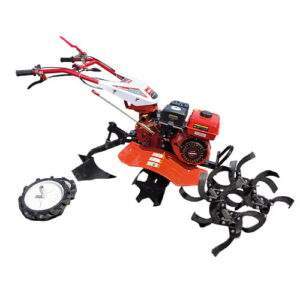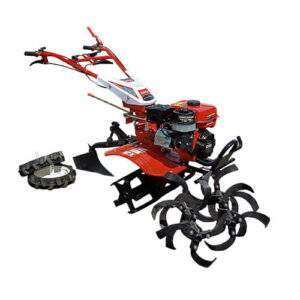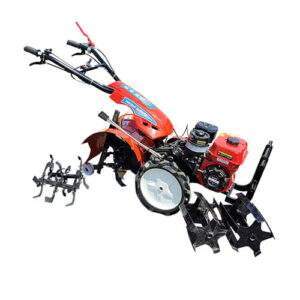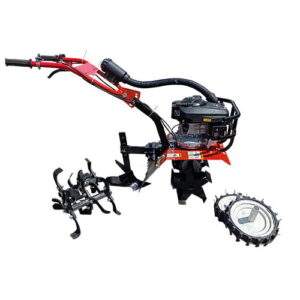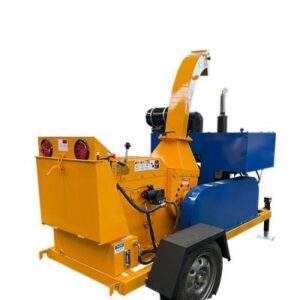The Journey of China Walking Tractor in Modern Agriculture
Introduction
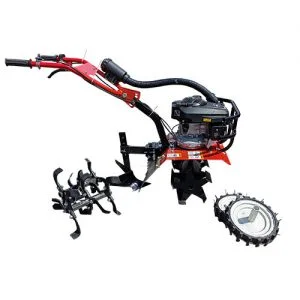
The integration of China walking tractors into modern agriculture has been a transformative journey, revolutionizing farming practices across the globe. Originating from humble beginnings, these versatile machines have evolved into indispensable tools for small-scale and large-scale farmers alike. In this blog, we delve into the history, evolution, and impact of China walking tractors in modern agricultural practices.
History of China Walking Tractors
China walking tractors have a rich history dating back to the mid-20th century. Initially developed to address the labor-intensive nature of traditional farming methods, these tractors offered a cost-effective and efficient alternative. Early models were simple in design, featuring basic functionality and manual controls. However, as technology advanced, so did the capabilities of these machines.
Evolution of China Walking Tractors
Over the decades, China walking tractors have undergone significant evolution, incorporating innovations in engine technology, design, and functionality. The introduction of diesel engines enhanced power and efficiency, allowing farmers to tackle more demanding tasks with ease. Furthermore, advancements in hydraulic systems facilitated the attachment of various implements, expanding the versatility of these tractors.
Applications in Modern Agriculture
China walking tractors have become indispensable tools in modern agricultural practices, offering a myriad of applications that contribute to the efficiency and productivity of farming operations. Here are some expanded details on their versatile usage:
Plowing and Harrowing: China walking tractors are commonly used for plowing and harrowing fields, preparing the soil for planting. Equipped with appropriate implements, such as plows and harrows, these tractors effectively break up the soil, loosen compacted earth, and remove weeds, creating an optimal seedbed for crops. Their maneuverability allows farmers to navigate through narrow rows and irregular terrain, ensuring thorough coverage of the field.
Seeding and Planting: With the attachment of seeders and planters, Chinese walking tractors facilitate precise seeding and planting operations. Farmers can adjust seeding rates and planting depths according to crop requirements, ensuring uniform distribution and optimal germination. This level of precision enhances crop establishment and contributes to higher yields, particularly in small-scale farming where manual planting may be labor-intensive and inconsistent.
Cultivation and Weed Control: Chinese walking tractors are effective tools for cultivating between rows and controlling weeds in crops. By attaching cultivators and weeders, farmers can mechanically remove weeds while aerating the soil and promoting root growth. This reduces the competition for nutrients and moisture, thereby enhancing crop health and vigor. Additionally, mechanical weed control minimizes the need for herbicides, supporting sustainable farming practices.
Fertilization and Irrigation: Some China walking tractors are equipped with attachments for fertilizer application and irrigation, allowing for efficient nutrient management and water distribution. Farmers can accurately apply fertilizers based on soil nutrient levels and crop requirements, optimizing nutrient uptake and minimizing waste. Similarly, irrigation attachments enable precise water delivery, ensuring adequate moisture levels for crop growth while conserving water resources.
Harvesting and Post-Harvest Operations: While Chinese walking tractors may not be suitable for large-scale harvesting, they can be used for harvesting certain crops, such as vegetables and fruits, on smaller farms. Attachments such as tow-behind trailers or bins facilitate the collection and transport of harvested produce, streamlining post-harvest operations. Additionally, walking tractors can power other equipment, such as threshers or shellers, for processing harvested grains or seeds.
Impact on Farming Communities
The widespread adoption of China walking tractors has had a profound impact on farming communities worldwide. By increasing efficiency and productivity, these machines have helped alleviate labor shortages and reduce operational costs. Moreover, their affordability has made mechanized farming more accessible to smallholder farmers, empowering them to improve their livelihoods and enhance food security.
Case Studies: China Walking Tractors in Action
To illustrate the practical applications of China walking tractors, let’s examine a few case studies showcasing their effectiveness in different farming scenarios:
- Small-Scale Farming: In rural China, small-scale farmers rely on walking tractors for various tasks, from land preparation to transportation. These machines enable farmers to increase their productivity while minimizing labor requirements.
- Hilly Terrain Agriculture: In regions with hilly terrain, such as parts of Southeast Asia, walking tractors equipped with specialized attachments are used for terracing and cultivation on slopes, maximizing arable land utilization.
- Market Gardening: In Europe and North America, walking tractors are popular among market gardeners and urban farmers for their versatility and compact size. They enable efficient cultivation in confined spaces, such as urban gardens and small plots.
The comparative advantages of Chinese walking tractors over traditional farming methods:
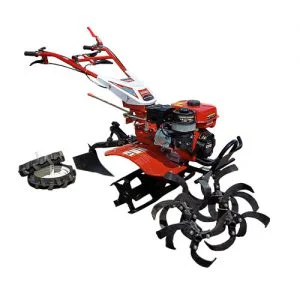
| Aspect | China Walking Tractors | Traditional Farming Methods |
|---|---|---|
| Labor Efficiency | Requires fewer laborers due to mechanization | Relies heavily on manual labor for various tasks |
| Time Savings | Completes tasks faster, reducing overall labor time | Tasks often take longer to complete manually |
| Cost Effectiveness | Lower operational costs due to fuel efficiency and maintenance | Higher labor costs associated with manual labor and upkeep |
| Versatility | Can be used for multiple tasks with different attachments | Limited to specific tasks depending on available manpower |
| Precision in Operations | Allows for precise adjustments in seeding, planting, etc. | Limited precision, leading to variations in planting and other tasks |
| Accessibility and Maneuverability | Maneuvers easily in small fields and tight spaces | Large equipment may struggle to access narrow or uneven terrain |
Conclusion
The journey of China walking tractors in modern agriculture exemplifies innovation and adaptation in response to evolving farming needs. From their humble beginnings to their widespread adoption, these machines have reshaped the landscape of farming, empowering farmers with efficiency, affordability, and versatility. As we look to the future, China walking tractors are poised to continue playing a crucial role in sustainable and productive agriculture worldwide.
FAQ
Q:What is a China walking tractor?
A:A China walking tractor is a small agricultural vehicle equipped with a two-wheel design and a variety of attachments for performing different farming tasks.
Q:What are the advantages of using a China walking tractor?
A:Some advantages include affordability, versatility, and suitability for small-scale farming operations. These tractors are also fuel-efficient and easy to maintain.
Q:Can China walking tractors handle heavy-duty tasks?
A:While they may not be suitable for heavy-duty tasks like large-scale tilling or harvesting, China walking tractors excel in lighter tasks such as plowing, harrowing, and seeding.

